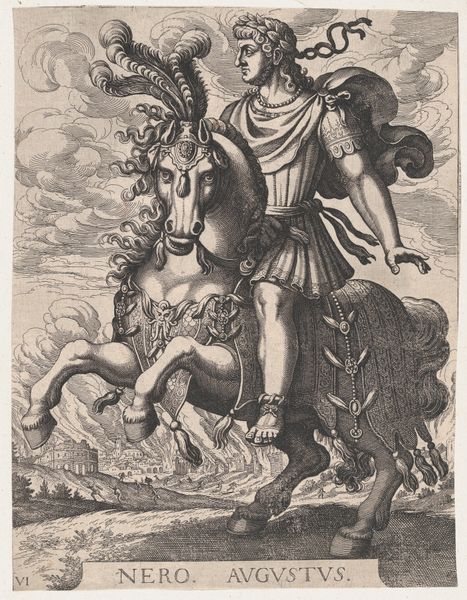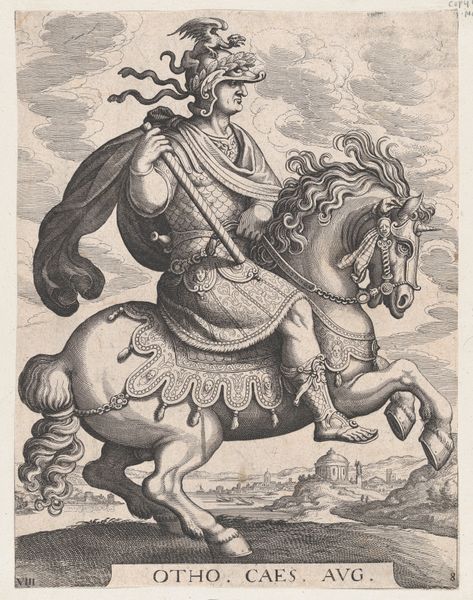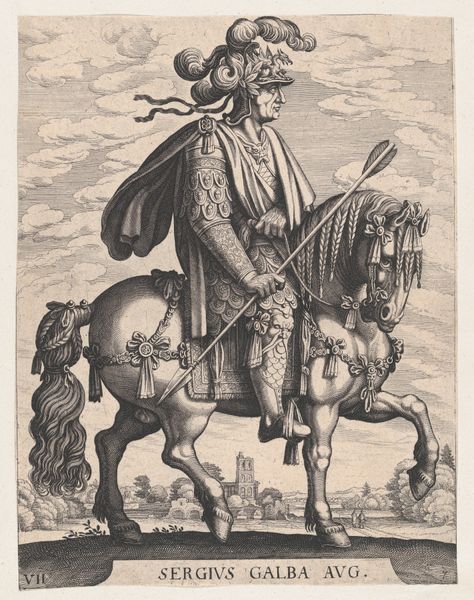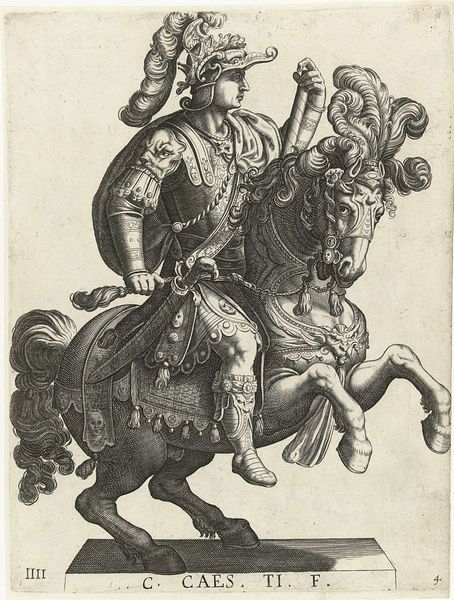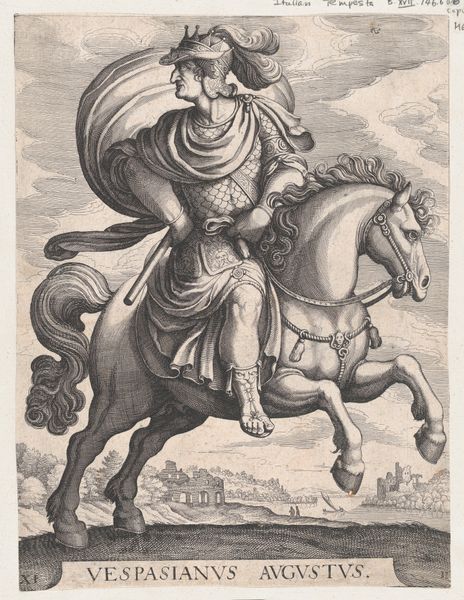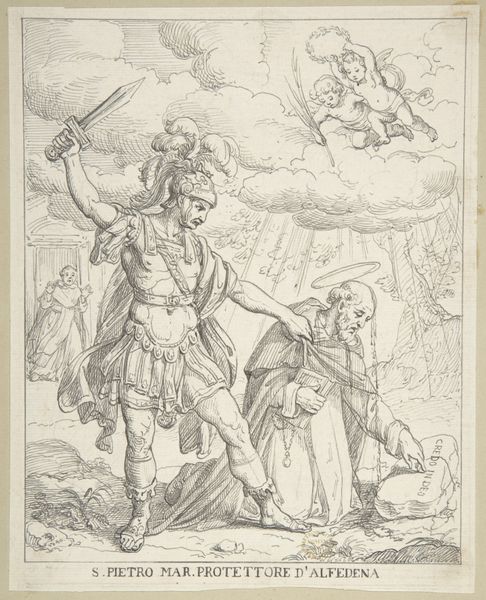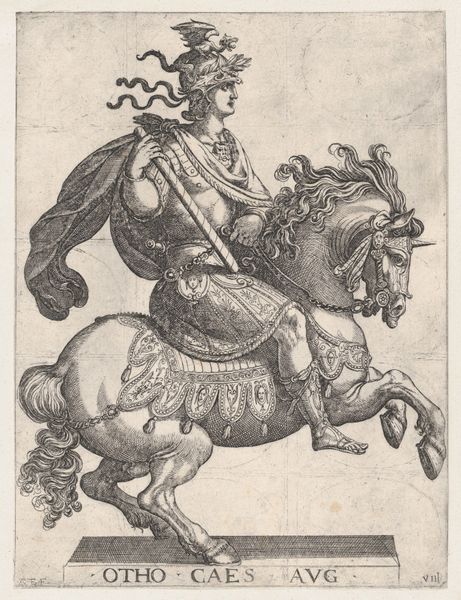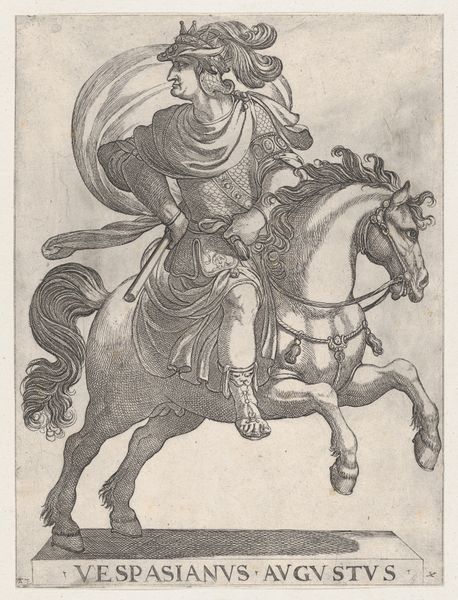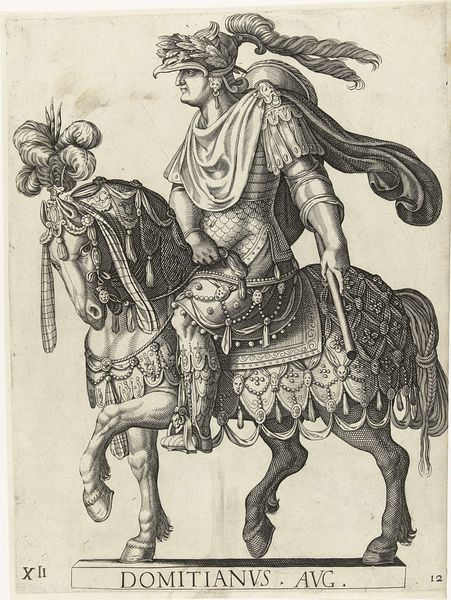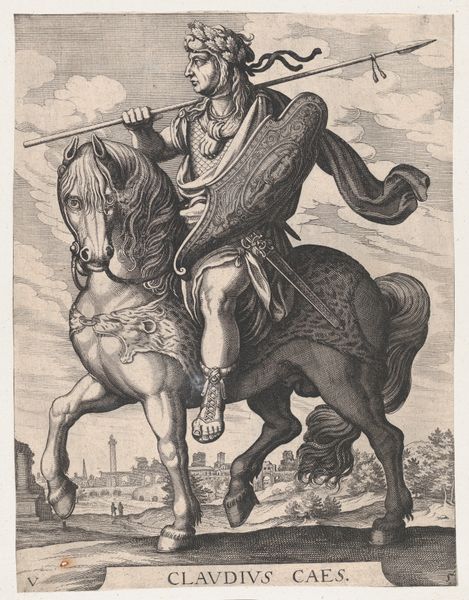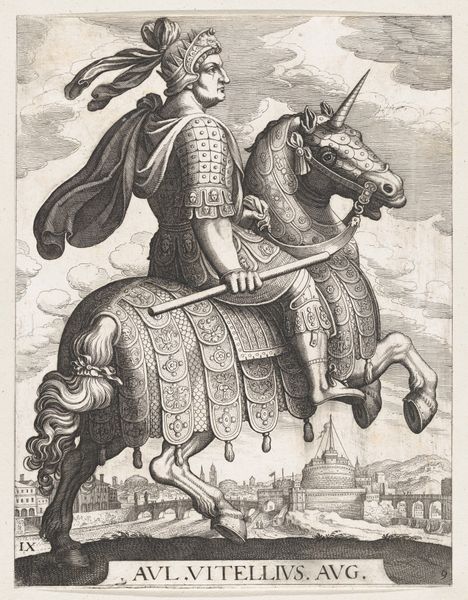
Plate 4: Emperor Gaius on Horseback, from 'The First Twelve Roman Caesars', after Tempesta 1610 - 1650
0:00
0:00
drawing, print, engraving
#
portrait
#
drawing
#
baroque
# print
#
figuration
#
line
#
history-painting
#
engraving
Dimensions: Sheet: 11 11/16 x 9 1/16 in. (29.7 x 23 cm)
Copyright: Public Domain
Editor: Here we have Matthäus Merian the Elder's "Plate 4: Emperor Gaius on Horseback, from 'The First Twelve Roman Caesars', after Tempesta", dating from between 1610 and 1650. It's an engraving, so very detailed, but what strikes me is how incredibly theatrical it is. What do you see in this piece? Curator: It's important to view this print within the context of 17th-century power dynamics. The artist is clearly referencing Tempesta's original image. The choice to depict Gaius, better known as Caligula, a figure notorious for his alleged tyranny and excesses, invites us to question the very nature of leadership and authority during Merian’s time. What aspects of Caligula's representation do you find most striking? Editor: I think it's the ornamentation – all the plumes and detailed armor, on both the horse and rider, they seem exaggerated, almost absurd. Curator: Precisely! This excess can be read as a critique of power. How can we relate that back to society at the time? Are we really looking at Caligula or do we have a political statement about current leaders? Editor: I see what you mean. So the artist is perhaps using a historical figure to comment on contemporary issues of leadership and the dangers of unchecked authority. I hadn't considered it in that light, initially. Curator: And look at who the image was referencing – in reproducing the Tempesta print, it circulates the discussion. Remember also that prints allowed wider access to such commentary. Editor: That's fascinating! So it's not just a portrait; it’s a critical statement on the performance of power itself. Curator: Exactly. By examining art through such intersectional lenses we unveil hidden commentaries about how identity, power, and politics intertwine through history. It challenges the traditional interpretation, making us critically aware of its meaning and historical significance. Editor: Thanks, I hadn't seen all that on my first look! I'll definitely view these works more holistically from now on.
Comments
No comments
Be the first to comment and join the conversation on the ultimate creative platform.
